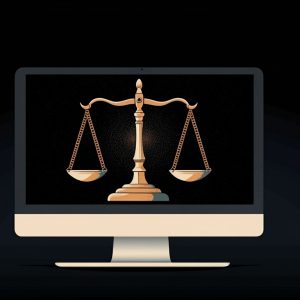
Organisations of all sizes are entering a prolonged period of change, a digital transformation that adds value to the notion that ‘every company is a software company.’
There are numerous different approaches that can be taken to transforming a business so that it can function more effectively in the modern world, but the Hybrid IT strategy is fast becoming the de-facto solution to the digital evolution of business.
In essence, Hybrid IT takes a split approach to enterprise computing. An organisation deploys a method of managing some of its IT resources in-house, while using cloud-based services for others.
The logic behind this approach is that it will allow a business to maintain control of things like data, while at the same time experimenting with cloud in areas such as Software-as-a-Service.
There are many different flavours of Hybrid IT as it’s all about finding the right solution to each business challenge. As Hewlett Packard Enterprise writes on its website: “It’s not an either/or world. It’s about finding the right platform for each app, workload and service.”
If you don’t think that digital transformation doesn’t apply to you, then you’re in the minority. According to HPE’s ‘Digital Transformation Index’ 80% of enterprises across all industries agree that it is a reality for their business right now.
However, according to research by Forrester, only 27% of firms have a comprehensive digital strategy. So while organisations realise that digital transformation is impacting their business, very few know how to approach it.
One of the key elements of figuring out a digital strategy is understanding what business problems need to be solved. This takes an alignment of the entire business, from IT to the boardroom and everything in between.
Understanding the problems that need to be solved helps to build the foundation of a Hybrid IT approach to digital transformation.
As happened with cloud computing, the general benefits of Hybrid IT are becoming increasingly well known; cost savings, increased security, and greater flexibility are just some of the core advantages.
In recent years the idea of Hybrid IT has become inseparable from the hybrid cloud approach to IT. This is basically the idea of a combination of private cloud and public cloud in an integrated system that allows for businesses to pick and choose where applications and date resides.
This means that the most sensitive data can remain on-premises, for either regulatory or security reasons, while SaaS applications and less sensitive data can sit in the public cloud, providing greater flexibility and cost savings.
Considering the increasing abundance of data and the growing number of regulations that need to be adhered to, having an effective data strategy can save the business time and money and help to create new areas of business revenue.
One approach to mastering organisational data is with the HPE Haven Platform to help remove data silos, analyse data that is both structured and unstructured and tap into modular cloud and open standards data solutions in order manage vast amounts of data.
One large organisation that has taken the hybrid cloud approach is 20th Century Fox, the media and entertainment giant turned to HPE Helion.
The Fox Media Cloud, a digital supply chain Platform-as-a-Service solution, is a hybrid cloud platform that supports the collaboration and distribution of marketing materials, broadcast quality television episodes, and full length feature films.
By using HPE’s technologies and services across public, private and hybrid cloud, and by using HPE Helion, Fox managed to automate over 70 digital media scenarios across its global Theatrical, Home Entertainment and Television business.
The media giant also added over three million assets in the content repository, distributing over 150,000 a month, it passed the 1.3 Exabyte per year mark for content sent, received, downloaded, and uploaded and it also rebuilt and expanded its global network footprint so that it now covers 149 offices in 95 cities and 44 countries across six continents.
According to the company these moves helped it to drive millions of annualised cost savings, increase its market share, reduce the amount of time it takes to deliver content, increase customer satisfaction, while it also became a ‘greener’ company thanks to a reduction in the number of prints and tape.
The technologies involved in this transformation included HPE Helion CloudSystem, HPE Helion Stackato and HPE Helion OpenStack, on the cloud front, while hardware included the HPE BladeSystem c7000, HPE 3PAR Storage and HPE Networking.
On the software front 20th Century Fox used HPE Fortify On-Demand, HPE SiteScope, HPE Fortify Static Code Analysis, HPE Database and Middleware Automation and HPE Universal Discovery.
What all these technologies highlight is a true mix of Hybrid IT, cloud services, hardware, software, automation capabilities and more. What they show is that Hybrid IT is a complex process that takes an organisation understanding its problems and a tech company that has the right solutions.
Although there are a growing number of examples of organisations that have successfully transformed their IT, there are still many that haven’t and that’s partly due to the challenges that are posed by such a big change.
Driving a Hybrid IT transformation relies upon the C-Suite leading the organisation to a digital mind-set. It’s necessary for the leadership to collaborate with managers and IT to design a strategy that fits across the organisation.
Changing the culture of a company is one of the biggest challenges due to their often being ambiguity regarding the direction of change combined with risk aversion that sees change often being difficult to embrace.
It’s important to remember that while technology plays a vital role in helping businesses to reach their transformation goals, it is not the only element that should be considered. Senior leadership providing clear direction will help the business to overcome the cultural change challenge.
Driving the organisation forward so that it is able to react to changing customer demands and increased competition is one of the biggest challenges facing the modern business.
Combining the right technologies with a clear strategy will help the business to overcome the rigidity and burdens of legacy computing and move into a world of agility supported by cloud computing technology.






